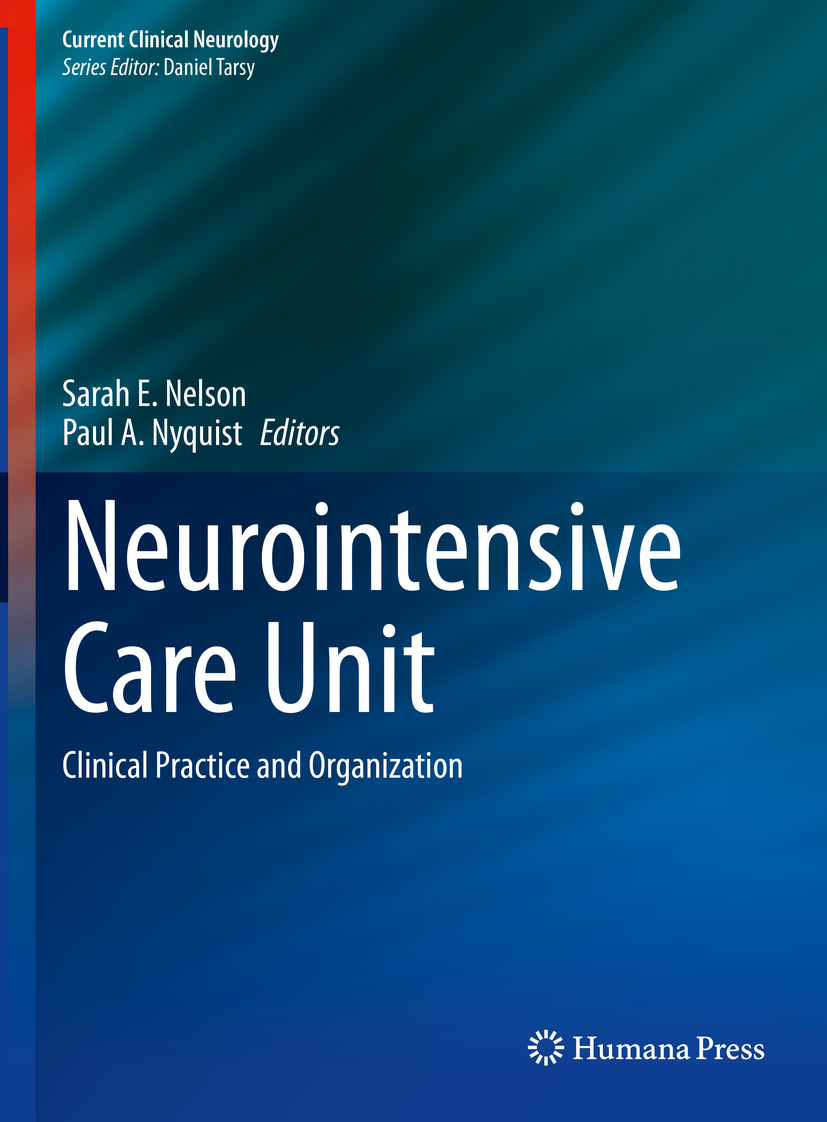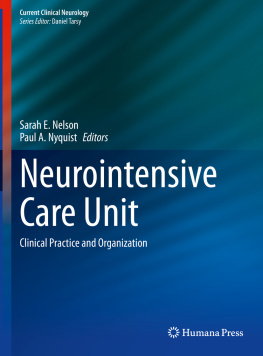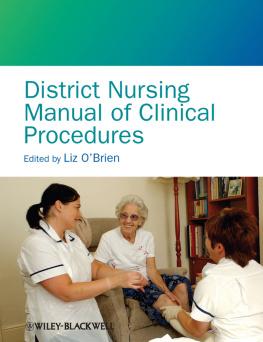Sarah E. Nelson - Neurointensive Care Unit: Clinical Practice and Organization
Here you can read online Sarah E. Nelson - Neurointensive Care Unit: Clinical Practice and Organization full text of the book (entire story) in english for free. Download pdf and epub, get meaning, cover and reviews about this ebook. year: 2020, publisher: Springer Nature, genre: Home and family. Description of the work, (preface) as well as reviews are available. Best literature library LitArk.com created for fans of good reading and offers a wide selection of genres:
Romance novel
Science fiction
Adventure
Detective
Science
History
Home and family
Prose
Art
Politics
Computer
Non-fiction
Religion
Business
Children
Humor
Choose a favorite category and find really read worthwhile books. Enjoy immersion in the world of imagination, feel the emotions of the characters or learn something new for yourself, make an fascinating discovery.
- Book:Neurointensive Care Unit: Clinical Practice and Organization
- Author:
- Publisher:Springer Nature
- Genre:
- Year:2020
- Rating:5 / 5
- Favourites:Add to favourites
- Your mark:
- 100
- 1
- 2
- 3
- 4
- 5
Neurointensive Care Unit: Clinical Practice and Organization: summary, description and annotation
We offer to read an annotation, description, summary or preface (depends on what the author of the book "Neurointensive Care Unit: Clinical Practice and Organization" wrote himself). If you haven't found the necessary information about the book — write in the comments, we will try to find it.
Neurointensive Care Unit: Clinical Practice and Organization — read online for free the complete book (whole text) full work
Below is the text of the book, divided by pages. System saving the place of the last page read, allows you to conveniently read the book "Neurointensive Care Unit: Clinical Practice and Organization" online for free, without having to search again every time where you left off. Put a bookmark, and you can go to the page where you finished reading at any time.
Font size:
Interval:
Bookmark:

More information about this series at http://www.springer.com/series/7630

This Humana imprint is published by the registered company Springer Nature Switzerland AG
The registered company address is: Gewerbestrasse 11, 6330 Cham, Switzerland
The field of neurocritical care is expanding. Presently, an understanding of its basic principles is essential for the appropriate care of patients requiring intensive care. In addition to understanding the basics of neurocritical care, it is also important to have an understanding of how a neurocritical care unit (NCCU) is structured and how the services paramount to its operation are accessed and organized. The goal of this book is to go beyond the management of neurocritical care-related illness by providing guidance to intensivists and providers from all backgrounds with regard to perspectives on how to organize and manage the challenging environment that is the NCCU. The first chapters in this book are dedicated to describing the current evidence-based management of key neurological emergencies, from beginning to end, across the timeline of care. We have included information about triaging decisions, from admission to discharge, as well as the use of pharmacologic agents unique to neurocritical care conditions. In the second section, we examine organizational principles of the NCCU including neurointensivists training, telemedicine and telestroke, and the responsibilities of key personnel in the NCCU. This includes the special roles and training requirements of nurses, advanced practice providers, residents, fellows, and attendings. We further delve into the use of specialty services such as ultrasound, electroencephalography, angiography, and multimodal monitoring all of which are necessary to support an NCCU. We also discuss the important issue of prognostication in neurocritical care patients. It is our goal to provide a textbook that is helpful to those aspiring to plan and build an NCCU as well as to those seeking a comprehensive review of neurocritical care management.
Neurointensive Care Unit: Clinical Practice and Organizationedited by Sarah Nelson and Paul Nyquist continues a tradition of books concerning neurocritical care that has appeared in Springers Current Clinical Neurology series over the past 15 years. These includeCritical Care Neurology and Neurosurgeryedited by Jose Suarez and two editions of theHandbook of Neurocritical Careedited by A Bhardwaj, MA Mirski, et al. These volumes were designed to detail the array of patients with acute, life-threatening neurological and neurosurgical illnesses encountered in intensive care units.Section 1of this volume expands upon these conditions providing much information that has appeared in the past 15 years concerning newly described acute and severe neurological conditions and the scientific basis of many new treatments and interventions that have become available in this area. There are ample numbers of tables and figures throughout the book that very nicely illustrate the issues presented.Section 2contains a newer body of information that reflects the widespread growth of neurocritical care units as free-standing hospital facilities staffed by certified professionals with a primary interest in neurocritical care. Special training and certification of neurointensivists, remote diagnosis by the use of telemedicine and telestroke, and the utilization of physician extenders such as nurse practitioners, physician assistants, nurses, residents, and fellows have allowed for the increased growth of specialized neurointensive care units. These personnel have been increasingly assisted by sophisticated ancillary services such as multimodal neuromonitoring; brain metabolism, blood flow, and intracranial pressure monitoring; and ultrasound, which have become essential to support the care of patients in neurointensive care units. In the future, this will continue to be a rapidly growing field that is now very effectively brought up to date by this well-organized and instructive volume.
Font size:
Interval:
Bookmark:
Similar books «Neurointensive Care Unit: Clinical Practice and Organization»
Look at similar books to Neurointensive Care Unit: Clinical Practice and Organization. We have selected literature similar in name and meaning in the hope of providing readers with more options to find new, interesting, not yet read works.
Discussion, reviews of the book Neurointensive Care Unit: Clinical Practice and Organization and just readers' own opinions. Leave your comments, write what you think about the work, its meaning or the main characters. Specify what exactly you liked and what you didn't like, and why you think so.












